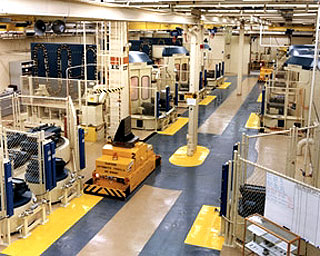
|
|
Toyota Production System

Process improvement strategies focus on eliminating waste within the company and improving the way employees work. One of the most popular process improvement strategies is the Toyota Production System (TPS).
TPS seeks to produce a healthy and safe working environment while managing the production of materials and equipment. Employees often are asked to change the way in which they perform their job because it is unsafe and leads to higher workplace accidents. The entire approach is centered around safety and eliminating waste from the organization.
|
|
The process was originally developed by Toyota to reduce eliminate waste from their factory. Workers were improperly performing their jobs, causing more problems to occur. Instead of scolding workers, Toyota implemented a system-wide mindset change. It is described as follows:
Toyota defines waste as being three-form
- Muri (overburden)
- Mura (inconsistency)
- Muda (eliminate waste)
Muri or overburden is considered to be all the unreasonable work that management assigns upon workers and machines due to poor organization. Mangers do not realize how much work their employees can actually handle so they consistently push them beyond their limits, causing errors to occur. Some examples of muri are carrying heavy weights, performing dangerous tasks, and working at a significantly faster than normal pace. Muri is associated with the preparation or planning phase of the production process. Changing the way the system is run before the employees every start working will reduce the error ratio and provide a safe working environment for everyone.
Mura or inconsistency is often called "unevenness." Like muri and muda, it is a spiritual term used to define a problem within your spiritual condition. In the TPS it focuses on the implementation and elimination of fluctuation of scheduling. Scheduling deals with ordering too little or too much product. It typically lies on the shoulders of the operations department since they control the actual production. Mura is commonly associated with production leveling using Heijunka or the Kanban method.
Lastly, Muda is defined as anything wasteful. Implementing muda focused on identifying the wastes (things that are unproductive or do not add value) and eliminating them from the process. Management is in charge of muda and it is their job to identify the bigger problems that are caused from muda, muri, and mura. If management can properly identify muda, they can slowly start eliminating them from the entire production process. In TPS, muda has 7 different types of waste.
- Overproduction
- Waiting
- Transporting
- Inappropriate Processing
- Unnecessary Inventory
- Unnecessary/Excess Motion
- Defects
Classifying all the wastes into different categories makes them easier to improve and start eliminating further wastes from occurring. Quality defects are typically one of the largest problems because the product is deemed defective by the customer. The product can be recycled, but most of the time it is tossed and money is wasted.
Overproduction is another large problem. Overproduction can be caused from weak marketing projections or fluctuations in changeover times. Overproduction is seen as the worse waste because it causes all the other wastes to occur. Managers try to compensate for overproduction by hiding it as inventory, but too much inventory is a waste.
You are not making money, you are storing product and this hurts your cash flow. When items are sitting, they are not adding value to the company so it is considered a waste.
Take a look at the transportation of your products. Each time they are moved, there is a risk of them being damaged, lost, or delayed. This waste is directly related to human error and should be completely eliminated. Motion refers to the way in which a worker or equipment works. Do they comply with safety regulations or are they taking shortcuts that put them at risk?
Privacy Policy, Terms of Use